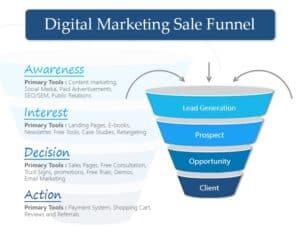Startups, digital agencies or companies communicate with a number of stakeholders in a wide range of ways. Indeed, organizations are made up of people, and those people have relationships continuously with other people, such as customers, employees or investors. After all, marketing can be defined as “the activity and processes for creating, communicating, delivering offerings that have value for customers, clients and partners”.
One of the most important ways to communicate for a business is in Verbal or Written forms, which occurs when we engage in speaking with others. The first print advertisement in 1704, The Boston Newsletter, made use of written communication; likewise today Social media does with visual and written communications. Written forms are an effective tool in business today exactly like in the past. Indeed, general rules apply both for online marketing and for traditional channels as human traits have remained unchanged for thousands of years.
Why Copywriting is So Important?
Let’s start with a definition:
“Copywriting is the art and science of strategically crafting and publishing targeted, reader-focused words (“copy”) that get people to take some form of action.” – Source: ExpressWriter.com
It does not matter if you write copy for Magazines, Instagram Ads, or SEO. Writing effective and compelling copy requires creativity, humour, curiosity, style, teamwork and vision. It’s challenging, a long-term strategy and it’s complex.
Why it is complex? Let’s see at some stats:
Over 4.4 million blog posts are published every day. Over 46,700 posts are published on Instagram each minute. 456,000 Tweets are sent on Twitter each minute.
Over quantity, with the constant demand for more quality content, there is a need for effective copywriting to attract visitors. In this scenario where is more difficult to capture users’ attention, the content needs to be very effective. You need to implement the right strategy and wording to convince people to believe what you’re offering. Good copywriting is directly correlated to brand identity, brand awareness, acquisition and revenue. That’s the reason why copywriting is extremely important for any business and for any channel.
Whether you’re into advertising or not, or you work already in advertising you might find it useful to learn more about how to write better copy!
Here you find #8 tips to help you to write a better copy. ?
1. Do Your Homework.
Some copywriters might find doing homework boring. However, when you start working on a new account or project you really need to know everything before starting. The more you know about the client and the industry, the better. Here, here’s what you need to learn more about your new client:
- Value Proposition: It is the reason (promise) why a customer should buy a product or service from that particular business vs. competitors.
- Customer Pain Point: Include this information in your copy: you can tell customers what product features will solve their problems.
- Customer Language: each group of people speaks a different language. It may be more or less formal; with more or less emoji, specific culture, and so on. Setting up the right tone of voice for your brand accordingly.
2. Telling a Story.
Building your story brand is fundamental as much as you have a clear brand positioning in place. The most frequent mistake we make on Social Media is paying too much attention to ourselves (our brand). Instead, customers are those who deserve more attention. The customer is the hero of the story, not the brand. Focus less attention on the product features (both graphically and written). However, it is a good idea to show the product when you don’t have a story to tell.
On this topic, I would suggest reading “Building a Story Brand” by D. Miller.
3. Sales Funnel & CTA.
How will you move people deeper into the marketing funnel? Don’t forget to set up a content plan for your funnel. Before you write your copy, it’s essential to understand your reader. Then, focus on a particular problem that the reader is struggling with. Make sure to include the right keywords in the SEO content and the right Call-to-Actions. Also, don’t be too “salesy”. “Learn more” sometimes works better than “Shop now”.

4. Be Synthetics & Specific.
Nowadays, we are overwhelmed by notifications, posts, blogs and advertising. You have only a few seconds to win the users’ attention. Say it Fast, Go Straight to the Point, and Be Concise.
Be Specific: include stats, evidence and figures. Don’t use Generalism. People don’t trust sentences like “we’re the best coffee maker in the world”. Instead, mention your target market. Why, How and Where you’re the best? Mention the target audience more specifically. Also, mention the name of the city (for a local market) or product updates because they work very well to grab the client’s attention!
5. Use Active Voice.
Use an active voice and action verbs eg. “Go, Make, Buy, Watch, See”. Instead, a passive voice is more complex to read and does not imply a CTA.
Define clearly your brand identity. Establish a unique tone of voice. Be friendly: talking to customers in a conversational and familiar way amaze them. They’re more receptive to believing in the brand and trusting us. Make use of emojis, and engage with your audience making questions.
6. Write Good Headlines.
Spend more time writing headlines since this will help grab user attention. Headlines have a higher visibility compared to the body. Here, are some tips to improve your headlines are stated in the famous book “Ogilvy on Advertising” originally published in 1963 by David Ogilvy.
- Include your brand name in the headline.
- Use “quotes” when possible. It might help ad recall.
- A number of words: “Headlines of ten words sell more than short headlines”. “On the other hand, a study of retailer advertising found that headlines of ten words sell more merchandise than short headlines”
- Include Helpful information: “Headlines that offer helpful information, like how to win friends and to influence people, attract above average readership.”
- News wins: “Headlines which contain news are sure-fire. The news can be the announcement of a new product, an improvement in an old product or a new way to use an old product.”
- Hyper-targeting: “If you’re advertising a kind of product which is only bought by a small group of people, put a word in your headline which will flag them down, like women over 35.
7. Think Whole Process.
When you publish a new post on Instagram or Twitter Ads there are some elements that come together: an image, a headline, a post title, and a description. Make sure all four of these component parts work in unity with your brand’s tone. Use words integrated within the image. The content you write should describe the image your graphic design provides you. The description adds additional information about the product or services that support the headline. It is important all the elements tell the same story. If the answer is no, do not post it.
8. Loss of Aversion.
“Loss aversion is the tendency to prefer avoiding losses to acquiring equivalent gains. The principle is prominent in the domain of economics. What distinguishes loss aversion from risk aversion is that the utility of a monetary payoff depends on what was previously experienced or was expected to happen. Some studies have suggested that losses are twice as powerful, psychologically, as gains”. Loss aversion was first identified by Amos Tversky and Daniel Kahneman. – Source: Wikipedia
Simply put, when we’re looking for a new product we are worried to make the wrong decision. When you’re viewing an advert from a well-known company like Tesla or Coca-Cola, the client is relatively sure to buy a good product. But if you’re looking to buy a brand-new product less popular, that person will think a lot if this is the right choice. For this reason, in the copy worth it to include trust messages to help customers reduce their level of anxiety.
Examples of Ways to overcome Loss of Aversions?
- Provide Free Samples
- By offering discounts (or By providing early exclusive access to new items)
- Referral programs
- Exclusive Launches on VIP E-mail Lists
- Urgency plays a crucial role in inciting loss aversion (as it sets the time frame for customers’ actions)
Conclusions.
Any ambitious startup or company to be successful needs to define and execute a consistent content strategy. There are many tactics to create persuasive contents and effective copy that help the company grow. A Marketing Strategy and Brand Positioning it’s just a premise to create a market differentiation and a competitive advantage. If you have any questions on this topic, drop me an email – I will be very glad to help!



Leave a Reply